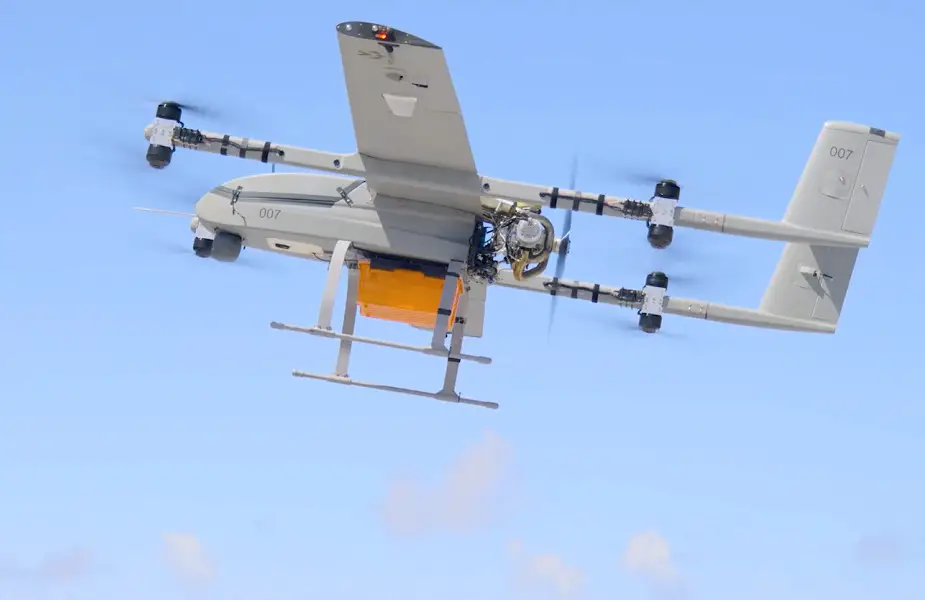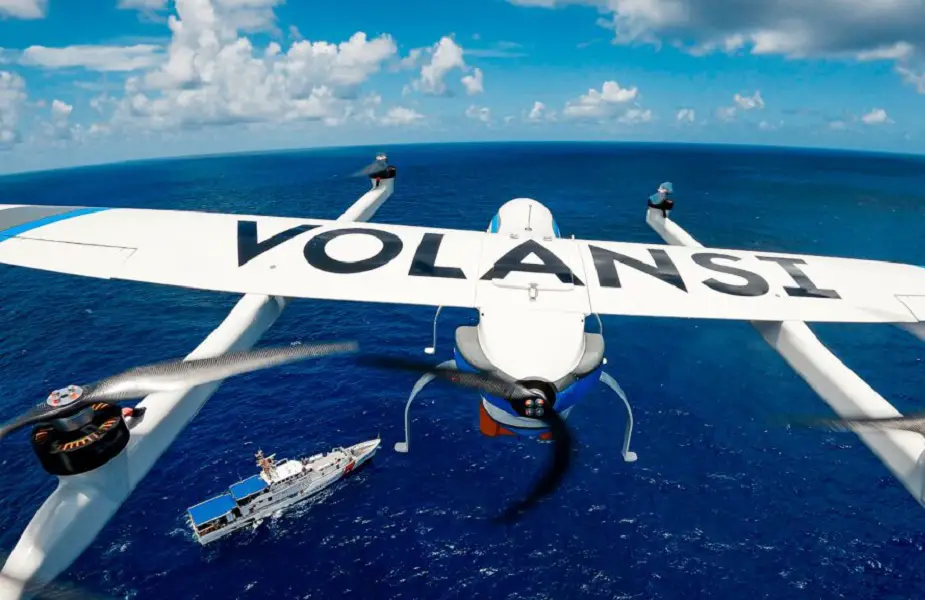Breaking news
Volansi and Sierra Nevada Corporation partner to jointly pursue US Army Future Tactical Unmanned Aircraft Systems Program.
Volansi, a Silicon Valley-based autonomous drone logistics company and Sierra Nevada Corporation (SNC), global aerospace national security company, announced a teaming agreement and partnership in support of the Army Future Tactical Unmanned Systems Increment 2 (FTUAS) Program.
Follow Air Recognition on Google News at this link

Volansi’s VTOL aircraft only require a small operational footprint, eliminating the need for runways, catapults, or infrastructure and can operate in challenging terrain and contested environments (Picture source: Volansi)
Based off Volansi’s design of a commercial unmanned aircraft and SNC’s turnkey Intelligence, Surveillance, Reconnaissance (ISR) integration, the Volansi/SNC Vertical Take-off and Landing (VTOL) platform was recently selected as one of the potential offerings for the U.S. Army FTUAS program for its redundancy and durability.
Volansi’s VTOL aircraft only require a small operational footprint, eliminating the need for runways, catapults, or infrastructure and can operate in challenging terrain and contested environments.
“We are proud to be a part of this Army effort,” said Volansi CEO, Will Roper. “Combining the best know-how of highly reputable defense companies, like Sierra Nevada Corporation, with a Silicon Valley-based startup is an innovation formula I encouraged while in government. It unlocks the full potential of the U.S. industrial base for our warfighters.”
“We are honored to work with key partner, Volansi to provide the US Army a Multi-Domain Operations ready FTUAS solution, blending the best of commercial innovation with SNC’s unprecedented turnkey ISR pedigree,” stated SNC’s Executive Vice President, Tim Owings.
 Volansi's VOLY 10 drone completing an autonomous delivery during a demonstration with the US Navy(Picture source: Volansi)
Volansi's VOLY 10 drone completing an autonomous delivery during a demonstration with the US Navy(Picture source: Volansi)
About FTUAS program:
The Future Tactical Unmanned Aircraft System (FTUAS) will be the replacement for the currently fielded RQ-7B Shadow in ground maneuver brigade combat teams. The FTUAS will be a low to medium altitude aircraft with modern datalinks, Electro-Optical/Infra-Red (EO/IR) sensors, Infra-Red/Laser pointer/Laser designator/Laser range finder, data encryption, manned-unmanned teaming capabilities and the ability to operate autonomously. Designed with a Modular Open Systems Approach, FTUAS payloads will be easily interchangeable.
The FTUAS will be readily deployable using Chinook Helicopters and provide commanders more flexibility on the battlefield. As the replacement for the RQ-7B Shadow, the FTUAS will be the brigade commanders’ primary day/night, reconnaissance, surveillance, and target acquisition system. It will allow the commander to see and understand the battle space and gain situational awareness on the battlefield. With runway independence, the system will expand the maneuver commander’s ability to conduct aerial reconnaissance where terrain would limit access for ground recon assets. The FTUAS’ reduced acoustic signature will improve survivability and reduce the chance of alerting adversaries.
The FTUAS will be able to observe heavily protected areas where commanders are hesitant to commit manned aerial platforms. It gives commanders a dedicated, rapidly taskable asset to see critical elements of the battle space and support the increased demand for immediate situational awareness on the battlefield.


























